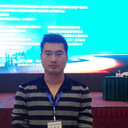Isolation and identification of an anti-hepatitis B virus compound from Hydrocotyle sibthorpioides Lam.
Avainsanat
Abstrakti
BACKGROUND
Hydrocotyle sibthorpioides (Apiaceae) have been used as a folk remedy for the treatment of fever, edema, detoxication, throat pain, psoriasis and hepatitis B virus infections in China. The aim of this study is to isolate and identify an anti-HBV compound from this herb.
METHODS
A compound (saponin) was isolated from the active ethanol extract using bioassay-guided screening. The structure of the saponin was elucidated by spectroscopic methods and compared with published data. The anti-HBV activity of the saponin was evaluated by detecting the levels of HBV antigens, extracellular HBV DNA, nuclear covalent closed circular DNA (cccDNA) and five HBV promoters in HepG2.2.15 cells. In addition, the levels of serum HBsAg/HBeAg, DHBV DNA, ALT/AST and hepatic pathological changes were analyzed in DHBV-infected ducks.
RESULTS
The chemical analysis indicated that the saponin isolated from Hydrocotyle sibthorpioides is asiaticoside. The pharmacodynamics experimental studies showed that asiaticoside effectively suppressed the levels of HBsAg/HBeAg, extracellular HBV DNA and intracellular cccDNA in a dose-dependent manner. Furthermore, experiments demonstrated that asiaticoside markedly reduced viral DNA transcription and replication by inhibiting the activities of core, s1, s2, and X gene promoters. In addition, asiaticoside markedly reduced DHBV replication without any obvious signs of toxicity. The levels of serum DHBV DNA, HBsAg/HBeAg were increased 3 days after drug withdrawal, but the levels rebounded slightly in the asiaticoside treatment groups compared with the 3TC treatment group. Moreover, analysis of the serum ALT/AST levels and the liver pathological changes indicated that asiaticoside could alleviate liver damage.
CONCLUSIONS
Our results show that asiaticoside could efficiently inhibit HBV replication both in vitro and in vivo, and asiaticoside may be a major bioactive ingredient in Hydrocotyle sibthorpioides.




